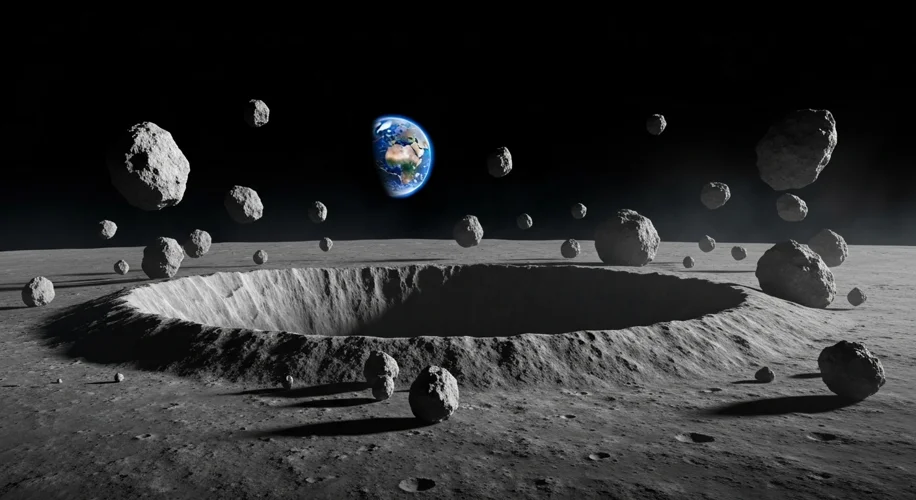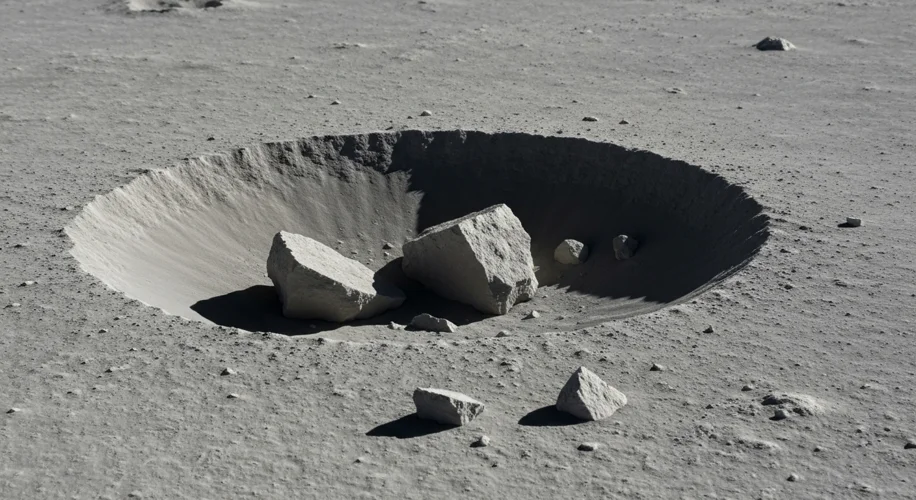The silent, unchanging face of the Moon—or so we thought. For millennia, our celestial neighbor has been a canvas of craters, a testament to the violent ballet of the cosmos. Yet, recent discoveries reveal a dynamic story unfolding, one etched in new impacts and freshly fallen boulders, quietly reshaping lunar history.
For centuries, the Moon served as a passive observer in our sky, its surface a seemingly static record of ancient bombardments. We gazed upon its pockmarked visage and imagined a world frozen in time. However, the relentless march of scientific observation, particularly with advanced orbital and telescopic technology, has begun to peel back this illusion of permanence.
Imagine, if you will, a celestial event as mundane as a rock falling from a shelf, but on a cosmic scale. A meteoroid, perhaps no bigger than a pebble or, in some cases, considerably larger, hurtles through the vacuum of space. Unseen and unfelt, it journeys for eons until its trajectory intersects with Earth’s Moon. The impact is not a gentle landing; it is an explosion, a brief, brilliant flash of light witnessed by sensitive instruments on Earth, followed by the creation of a fresh scar on the lunar surface and the ejection of debris—new boulders, freshly unearthed from the Moon’s ancient regolith.
These are not the colossal impacts that shaped the Moon’s very crust billions of years ago, events that left behind basins hundreds of kilometers wide. Instead, these are the modern-day punctuation marks in the Moon’s ongoing narrative. These impacts, occurring with surprising frequency, are often detected by their fleeting flashes of light, captured by telescopes monitoring the lunar surface. Teams of dedicated astronomers then use this data to pinpoint the location and estimate the size of the impactor. What follows is a fascinating chase: scientists compare recent images of the impact site with older, pre-impact photographs. Like detectives piecing together a crime scene, they look for the tell-tale sign of a new crater and, often, the scattered debris—the newly exposed lunar boulders.

One of the most compelling aspects of these discoveries is the opportunity they present to study the dynamics of space debris in near-Earth space. Understanding the population of meteoroids and their impact rates is crucial for a variety of reasons. For space agencies planning crewed missions, particularly to the Moon or Mars, knowing the risks posed by these cosmic projectiles is paramount. It informs the design of spacecraft shielding and mission planning, ensuring the safety of astronauts. Furthermore, these impacts offer a unique window into the composition of the asteroid belt and comets, shedding light on the building blocks of our solar system.
Consider the findings from missions like NASA’s Lunar Reconnaissance Orbiter (LRO), which has been instrumental in documenting these changes. By comparing LRO images taken over time, scientists can identify new craters and associated ejecta blankets that were not present in earlier surveys. These observations have confirmed that the Moon is not a static relic of the past, but a geologically active body, albeit in a very different way than Earth. The frequency of these smaller impacts suggests that the bombardment of the inner solar system is an ongoing process, with the Moon acting as a much-readier target than our protective atmosphere allows for Earth.
These newly fallen boulders are more than just curiosities; they are tangible pieces of lunar history, freshly exposed. Studying their composition, through spectral analysis and, in the future, perhaps direct sampling, can reveal information about the subsurface layers of the Moon, offering insights into its geological evolution. The energy released by these impacts, though small on a cosmic scale, is significant enough to create noticeable changes in the lunar regolith, a fine, dusty layer that covers the Moon’s surface.
The implications of this ongoing bombardment extend beyond scientific curiosity. As humanity increasingly looks towards the Moon as a potential base for future exploration and resource utilization, understanding these dynamic processes becomes critical. The very surface we might walk on, or build upon, is subject to constant, albeit subtle, alteration.
In essence, the mystery of the Moon’s boulders is not so much a puzzle of if these events occur, but rather an ongoing investigation into their frequency, scale, and the detailed story they tell about our solar system’s dynamic nature. Each new impact crater, each scattered boulder, is a fresh whisper from the cosmos, reminding us that even the seemingly unchanging heavens are in a state of perpetual, albeit slow-motion, change.

